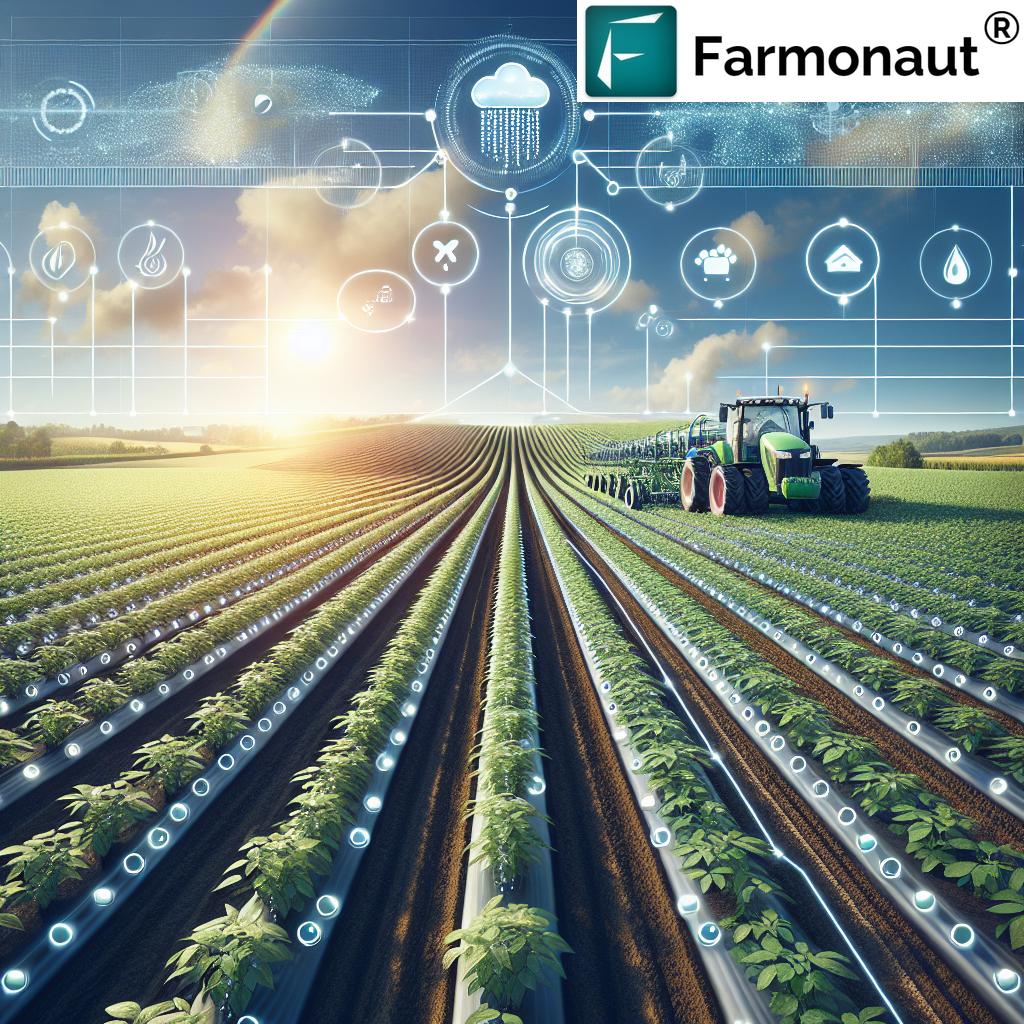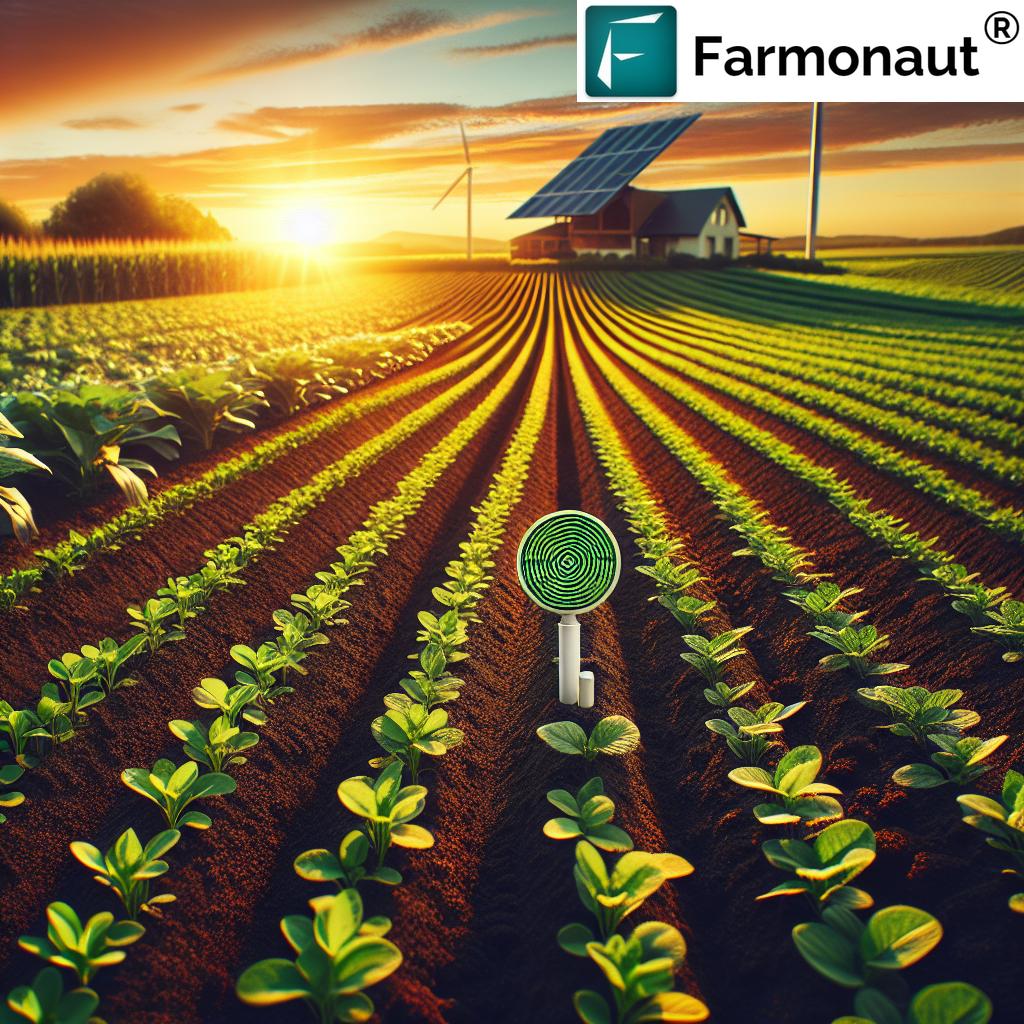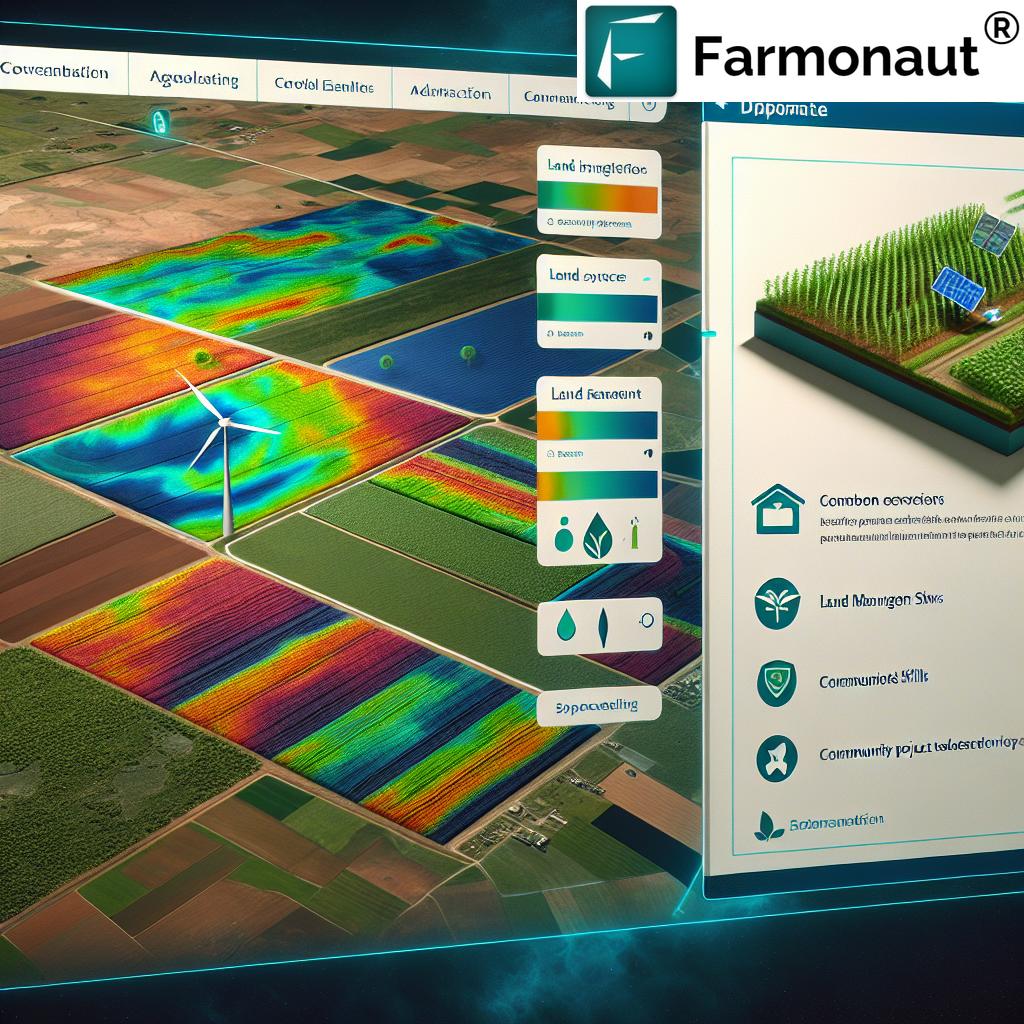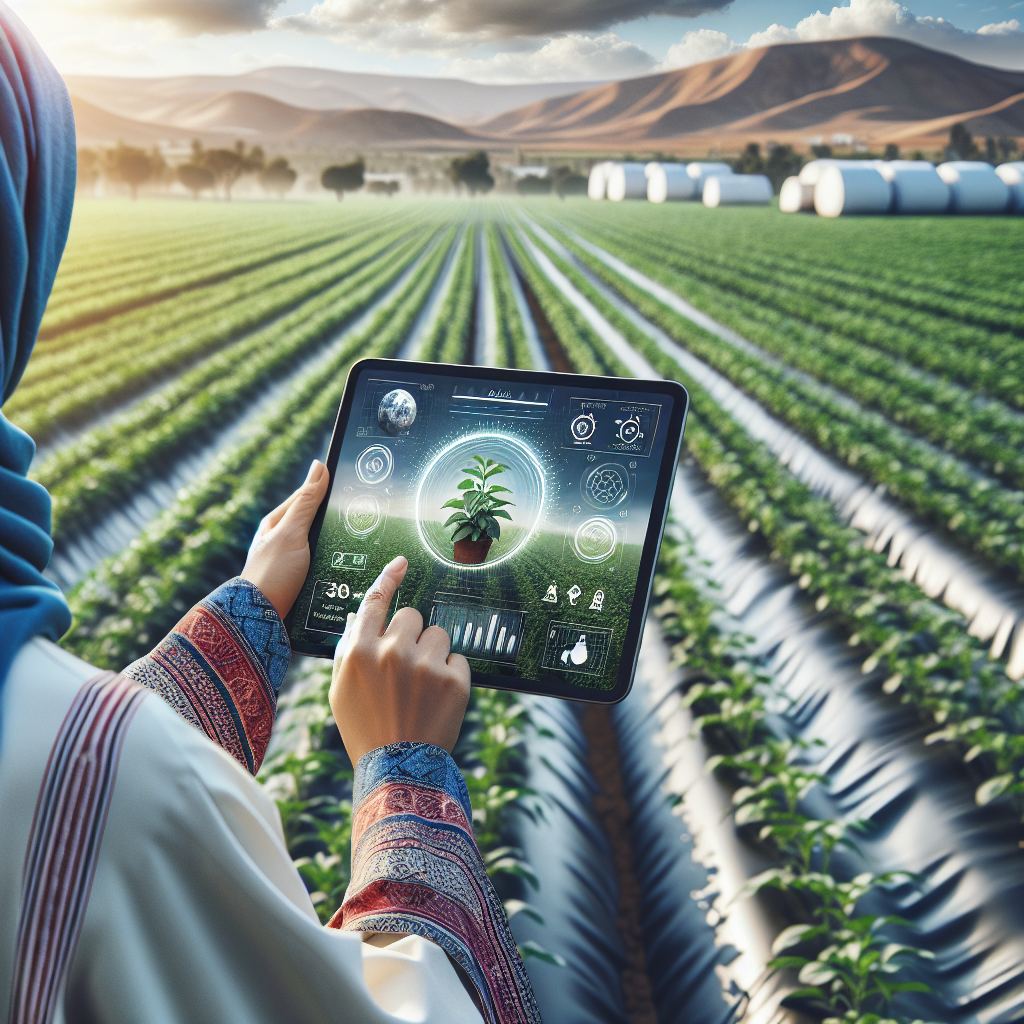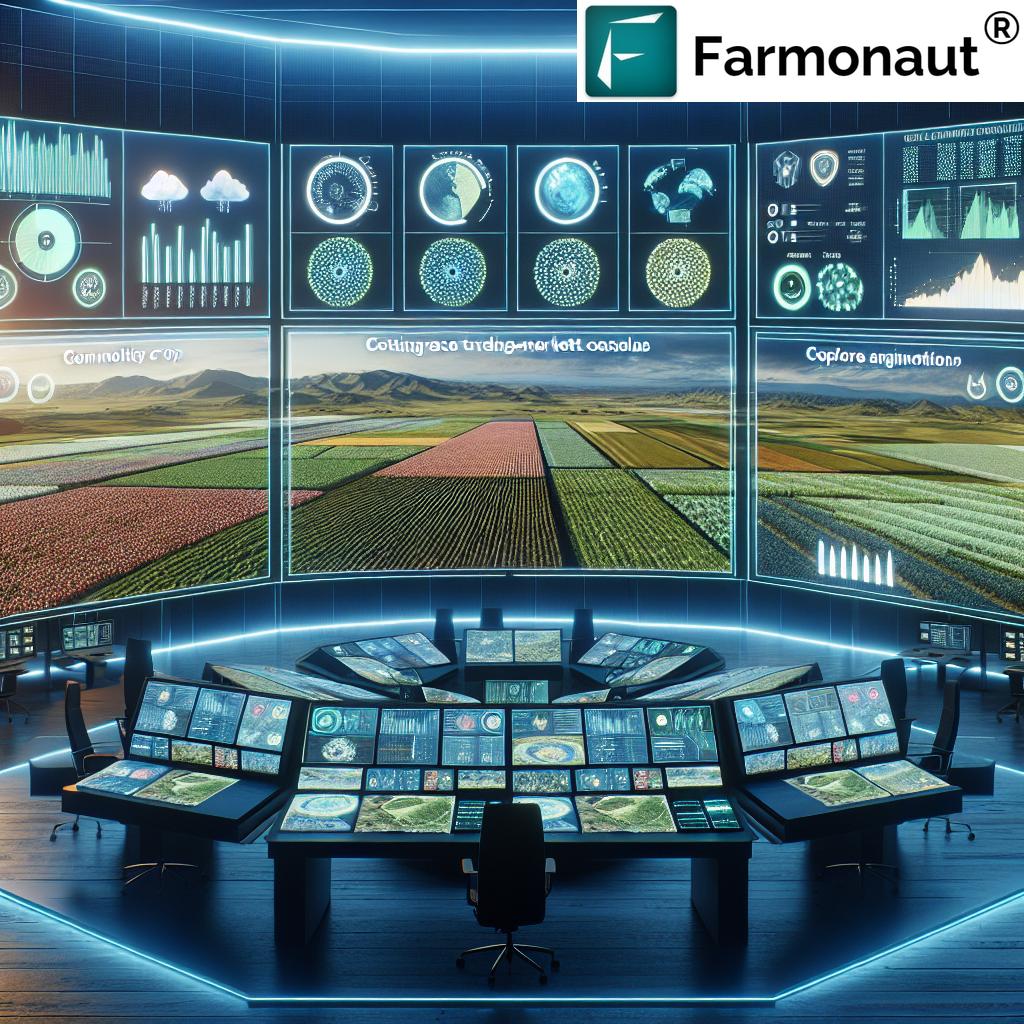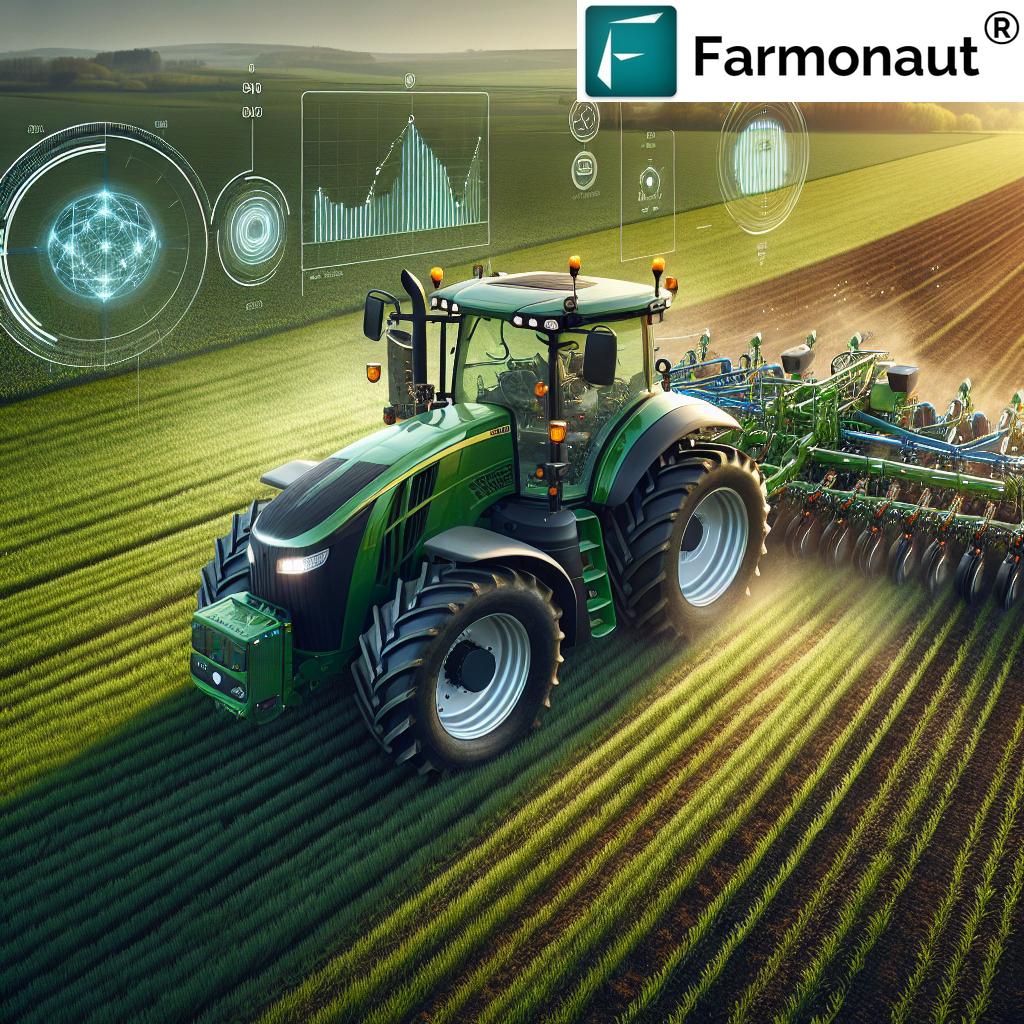Table of Contents
- Introduction: The Promise of Precision Agriculture
- Historical Context & Evolution of Precision Agriculture
- Precision Agriculture: 7 Breakthrough Technologies
- Comparative Technology Impact Table
- Farmonaut: Advancing Precision Agriculture for All
- Benefits of Precision Agriculture Technology
- Challenges & Roadblocks
- The Future of Precision Agriculture: Emerging Trends
- Frequently Asked Questions (FAQ)
- Conclusion: The Next Green Revolution
“Satellite imagery in precision agriculture can increase crop yield predictions by up to 20% compared to traditional methods.”
Precision Agriculture: 7 Breakthrough Technologies Boosting Yields
As modern agriculture evolves, precision agriculture has become indispensable for maximizing yields, optimizing resource use, and promoting environmental stewardship. Our world’s need for reliable, sustainable food production has never been more urgent, and precision farming technology provides the data-driven tools to meet these demands. In this comprehensive guide, we’ll explore the remarkable journey of precision agriculture, its evolution, and the seven game-changing technologies revolutionizing how we farm. We’ll also demonstrate how platforms like Farmonaut are making these innovations accessible for farmers around the globe.
From variable rate technology to advanced sensing systems, let us uncover how today’s data, mapping, and digital analytics are reshaping every step of the farming process—from soil management to harvesting the very last kernel.
Historical Context & Evolution of Precision Agriculture
The journey of precision agriculture began in the early 1990s—an era marked by the coming together of GPS (Global Positioning System) and powerful computing. These technologies allowed farmers to gain an unprecedented, precise view of their fields, changing the landscape of farm management forever.
- Early 20th century: Mechanization transforms labor and scalability in farming.
- 1960s: The Green Revolution introduces high-yield crops, fertilizers, and new water management techniques.
- 1990s-Onwards: GIS, computer models, and GPS field mapping empower farm operators to analyze spatial variability in soil, crops, and input application, directly improving productivity and conservation.
The concept of tailoring farming interventions—like seeding or fertilizing—to specific sections of a field unlocked new frontiers in agricultural efficiency, sustainability, and yield potential.
Precision Agriculture: 7 Breakthrough Technologies
Today, the integration of technology and agriculture is reshaping how we view data, mapping, and sustainable farming practices. Let’s examine the seven most essential innovations fundamentally changing field management and maximizing yields.
“Variable rate technology enables farmers to reduce fertilizer use by as much as 15% while maintaining optimal crop growth.”
1. GPS & GIS: Precise Field Mapping and Management
At the heart of precision farming technology lie GPS (Global Positioning System) and GIS (Geographic Information Systems). By accurately tracking location and enabling mapping of field variability, these systems:
- Enable precise application of seeds, fertilizers, and pesticides
- Support yield mapping and analysis across different areas of a farm
- Facilitate automated equipment guidance for planting, weeding, and harvesting
- Allow detailed comparison of soil conditions and historical crop performance
This spatial information is crucial for creating management zones—organizing fields into sections requiring unique inputs or interventions.
Farmonaut’s Role: By harnessing satellite-based remote sensing and advanced AI-driven mapping systems, Farmonaut enables even smallholder farmers to leverage the accuracy of cloud-based gps field mapping on web, Android, or iOS—making advanced crop and field analytics accessible to all.
2. Remote Sensing & Drones in Farming
Drones in farming and remote sensing tools utilize cutting-edge multispectral, hyperspectral, and thermal imaging. By flying over fields—or using satellites—they provide high-resolution data on:
- Crop health: Detecting nutrient deficiencies, disease, or drought stress
- Soil moisture and texture mapping
- Pest and weed hotspots for targeted interventions
These eye-in-the-sky platforms dramatically reduce manual scouting labor, ensuring quick detection of potential threats or suboptimal areas.
Example: Farmonaut employs satellite imagery to provide scalable, affordable remote crop monitoring, delivering accurate NDVI vegetation health indices, moisture analytics, and actionable insights—all directly via web browser or mobile app.
- Learn more about Farmonaut’s satellite-based monitoring here.
3. Variable Rate Technology (VRT): Targeted Input Application
Variable rate technology (VRT) automates the site-specific application of seeds, fertilizers, pesticides, and even irrigation water:
- Equipment uses field-specific data (from soil and remote sensing) to optimize input use by section, not by whole field average.
- Benefits: Significant reductions in input waste, cost, and environmental runoff.
- Result: Enhanced yield where resources are needed most, and conservation where they’re not.
As a core pillar of sustainable farming practices, VRT is improving yields and ecosystem health for thousands worldwide.
4. Yield Monitoring and Mapping
Yield monitoring and mapping is the process of collecting real-time data on crop yields and quality during harvesting. Using harvesters equipped with sensors, farmers track:
- How much crop is being gathered, per precise GPS location
- Moisture content and grain quality metrics
Sophisticated analytics convert this stream into color-coded yield maps. This way, we can identify trends, optimize variable rate applications, and plan targeted interventions for poorly performing areas.
Did you know? Farmonaut’s web and app interfaces generate yield estimates and crop health dashboards to support more informed business and farming decisions.
5. Soil and Crop Sensors: Real-Time In-Field Intelligence
Soil and crop sensors are embedded devices that continuously analyze:
- Soil moisture and nutrient content
- pH and temperature
- Crop canopy health (chlorophyll fluorescence, spectral reflectance)
These sensors deliver the “vital signs” of soil conditions and plant health. By acting on sensor alerts, farmers achieve efficient irrigation, precise fertilizer dosing, and preventative pest management.
Want deep-dive analytics? Try Farmonaut’s API for programmatic access to soil and crop health data. See the Farmonaut Satellite & Weather Data API (read the Developer Docs).
6. Autonomous Machinery & Robotics: Smart, Unmanned Farming
The integration of autonomous tractors, planters, and robotic harvesters means ultra-efficient field work. These systems, guided by GPS and AI, can:
- Operate tirelessly to plant seeds, distribute fertilizers, and harvest crops
- Perform precise operations, reducing overlap and input waste
- Lower labor costs and minimize human error
Robotics and automation are enabling a new era of consistent, high-precision agriculture.
- Manage your farm machinery efficiently: Farmonaut offers a robust Fleet Management solution to monitor, optimize, and track all your vehicles and equipment in the field, promoting efficiency and sustainability.
7. Data Analytics & Machine Learning: The Intelligence Engine
The explosion of farming data demands powerful analytics tools. Agricultural data analytics platforms and machine learning algorithms sift through sensor, satellite, and equipment data to:
- Predict yield outcomes and optimize crop selection
- Anticipate pest outbreaks or disease pressure
- Recommend best practices for input use, scheduling, and even carbon management
With AI and machine learning fueling the shift to “prescriptive” agriculture, automated recommendations and risk forecasts are now within every farmer’s reach.
Discover AI for smart farm decisions: Farmonaut’s Jeevn AI Advisory System delivers tailored crop management strategies and weather alerts for both small and large farms, using real-time satellite and in-field data.
Comparative Technology Impact Table: Breakthroughs in Precision Agriculture
| Technology Name | Primary Function | Estimated Yield Increase (%) | Resource Savings | Sustainability Impact | Example Use Case |
|---|---|---|---|---|---|
| GPS & GIS | Precise field mapping, equipment guidance, spatial analytics | 5–10% | Reduces overlap and input wastage (seeds, fertilizer) | Improved resource use; less soil and water impact | Creating management zones for tailored interventions |
| Remote Sensing & Drones | Crop monitoring, early detection of stress, actionable aerial imagery | Up to 20% | Targets problem areas, reducing blanket (wasteful) interventions | Minimizes pesticide/fertilizer runoff | Identifying water stress or disease hotspots on large fields |
| Variable Rate Technology (VRT) | Automates input (seed, fertilizer, pesticide) rates per field zone | 8–15% | Fertilizer savings up to 15%; reduced pesticide cost | Decreases chemical load, enhances soil health | VRT fertilizer application on variable soil zones |
| Yield Monitoring & Mapping | Real-time yield & moisture tracking, field performance analytics | Up to 10% | Focuses inputs on underperforming areas | Maximizes land-use efficiency | Color-coded yield maps for decision making |
| Soil & Crop Sensors | Measures soil moisture/nutrients, crop health markers | 5–20% | Efficient irrigation, reduced fertilizer losses | Lowers water and chemical use, boosts biodiversity | Automated irrigation scheduling by soil moisture |
| Autonomous Machinery & Robotics | Self-driving equipment for planting, spraying, harvesting | 10–15% | Reduced labor, optimized input delivery | Less soil compaction, lower emissions | Driverless tractor for seed planting |
| Data Analytics & Machine Learning | Predictive analytics, automated recommendations, risk alerts | 5–20% | Prevents crop losses, guides efficient input/scheduling | Reduces unnecessary input use, improves resilience | AI-driven crop management platform |
Farmonaut: Advancing Precision Agriculture for All
As the global demand for precision agriculture and affordable data-driven farming technology rises, Farmonaut leads the way in democratizing these tools for everyone—from smallholders to large agribusinesses. Let’s look at how Farmonaut’s integrated ecosystem addresses key pain points in resource management, sustainability, and productivity:
-
Real-Time Satellite-Based Crop Monitoring: Monitor crop health, nutrient status, and soil moisture on-the-go via an intuitive web app, Android, or iOS.



- AI-Based Advisory Systems: Jeevn AI provides year-round, location-specific recommendations based on advanced machine learning analytics and historical crop data, improving yields and input allocation. No expertise needed—just actionable insights.
- API and Custom Integrations: Organizations and businesses can integrate Farmonaut’s satellite and weather data directly using the API Access or detailed Developer Docs.
- Product Traceability Solutions: For food & textile enterprises, Farmonaut’s Blockchain Traceability tracks every step from field to shelf, ensuring transparency, sustainability claims, and fraud protection across any supply chain.
- Fleet & Resource Management: Agribusinesses can efficiently control machinery, reduce operational costs, and boost productivity—all from a centralized platform.
- Carbon Footprinting Tools: Quantify your farm’s environmental impact and implement emissions-reduction strategies, with Farmonaut’s easy-to-use carbon tracking dashboard.
- Large-Scale Plantation Advisory: Manage plantations or forests at scale using Farmonaut’s Plantation and Forest Advisory features.
- Support for Crop Loans & Insurance: Enable risk-free access to credit with satellite-based crop verification for banks and insurance providers.
All these services are offered on a subscription basis—flexible and scalable for individuals, groups, and institutions. See Farmonaut’s current packages below:
Benefits of Precision Agriculture Technology
Embracing precision agriculture leads to tangible improvements across every dimension of farm management:
- Increased Productivity: Optimal input use delivers higher crop yields and better quality, even in challenging soil and climate conditions.
- Lower Input Costs: Targeted application of seeds, water, fertilizers, and pesticides reduces unnecessary spending.
- Resource Conservation: Precision mapping and sensor-based irrigation help save precious water and prevent over-tillage or soil compaction.
- Environmental Sustainability: With less chemical runoff into water bodies and stronger soil health, farms become allies of local ecosystems.
- Better Risk Management: Predictive analytics and real-time monitoring flag disease, drought, or pest risks early, giving farmers time to adapt and protect their crops.
- Transparency and Traceability: Blockchain-backed traceability solutions help businesses meet regulatory, export, and consumer trust standards.
- Financial Access: Satellite-verified farm data empowers institutions to offer crop loans or insurance with lower risk and fraud.
Challenges & Roadblocks in Adopting Precision Agriculture
Despite its clear benefits, the transition to precision agriculture is not without obstacles.
- High Initial Investment: Technology upgrades can be costly, especially for small-scale farmers, including the price of drones, sensors, and VRT equipment.
- Technical Complexity: Operating high-tech machinery and interpreting data requires training and support, which can be challenging in regions with limited agritech expertise.
- Data Management & Privacy: Handling large volumes of field data demands robust infrastructure and raises questions about privacy and digital literacy.
- Infrastructure Limitations: Many rural areas lack reliable internet connectivity—essential for seamless sensor and satellite-data-based farm management systems.
Key enabler: Platforms like Farmonaut are specifically designed to address many of these issues, providing affordable, web/mobile-based interfaces and comprehensive support.
The Future of Precision Agriculture: Emerging Trends
As new innovations arrive, precision agriculture will keep advancing toward broader adoption, accessibility, and impact. Here’s what we can expect in the next wave:
1. Integration of AI in Agriculture
AI in agriculture will continue to enhance predictive analytics, generate dynamic recommendations, and automate everything from scouting to irrigation.
2. Sensor Technology Becomes Mainstream
Rapid advancements will deliver more cost-effective, easily deployable sensors, allowing for hyper-local soil and crop health analytics.
3. IoT-Driven Smart Farm Systems
The Internet of Things (IoT) will further connect equipment, sensors, and platforms, providing seamless control and automation of entire farm systems.
4. Data-Driven Sustainability
The next leap will focus on carbon footprinting and advanced environmental metrics. Farmonaut already enables farms and agribusinesses to track and report their emissions, supporting both compliance and market differentiation.
5. Decentralized Traceability & Regulatory Compliance
Supply chains will increasingly rely on blockchain-based traceability for transparency and fraud prevention. Farmonaut’s traceability platform automates this for enterprises and governments globally.
6. Widespread Digital Ag Education
More intuitive interfaces, video-based tutorials, and AI advisors will make adoption of precision farming technology easier for every demographic of farmer.
7. Increased Financial Inclusion
With satellite-based verification and risk assessment, more farmers will have access to crop loans and insurance products—boosting food security and economic resilience worldwide.
Frequently Asked Questions (FAQ)
1. What is precision agriculture, and why is it important?
Precision agriculture is a modern approach to farm management using information technology, remote sensing, and data analytics to ensure each crop and soil area receives only what it needs, when and where it needs it. It is crucial because it improves yields, conserves resources, reduces environmental waste, and increases overall farm profitability.
2. How does GPS field mapping benefit farmers?
GPS field mapping helps farmers create detailed farm and soil maps, guiding the precise application of inputs like seeds and fertilizers. This maximizes results, saves resources, and reduces environmental impact.
3. What is the difference between traditional farming and precision farming technology?
Traditional farming relies on uniform, blanket approaches, while precision farming technology tailors interventions based on real-time data and monitoring, leading to higher efficiency and sustainability.
4. Can smallholder farmers afford precision agriculture solutions?
Yes! Providers like Farmonaut offer affordable, subscription-based digital and satellite solutions that fit small and medium-sized farms—eliminating the need for costly, on-site hardware.
5. How do soil and crop sensors improve yield?
By providing accurate, real-time data about soil nutrient levels, moisture, and crop health, sensors ensure timely irrigation, precise fertilization, and quick action in case of stress, resulting in better harvests.
6. How do I get started with Farmonaut’s precision agriculture services?
Simply visit the Farmonaut portal, select your farm, and start monitoring via Android, iOS, or on desktop. You can also contact them for enterprise solutions or read more about their API.
7. Do these technologies help with sustainable farming practices?
Definitely. Every technology listed here—including yield monitoring and mapping, VRT, sensors, and blockchain traceability—reduces input wastage, runoff, emissions, and supports regenerative agriculture principles.
8. Which crops can benefit from precision farming?
Precision agriculture applies to a wide array of crops: grains, pulses, oilseeds, fruits, vegetables, plantations, and forestry. Any farm—large or small—can benefit.
Conclusion: The Next Green Revolution
The fusion of technology, data analytics, and farm management systems is driving the next great revolution in agriculture. Precision agriculture empowers us to sustainably feed our growing population, harnessing innovations in remote sensing, GPS mapping, sensors, robotics, and AI—not just to boost yields, but to build resilient, healthy ecosystems for generations to come.
As barriers to adoption are lowered, thanks to companies like Farmonaut, every farmer and agribusiness—from the Indian heartland to global export markets—can access the benefits of precision farming technology today. Whether you want higher yields, fewer resource losses, or a smaller carbon footprint, the journey starts with informed, data-driven decisions—and the right technology partner.
Ready to transform your agriculture?
Access Farmonaut Now →

